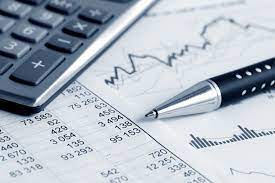Funds that track a market index,
such as the S&P 500®, are known as "index funds."
Index funds include both index
mutual funds and index exchange-traded funds, or ETFs.
These funds typically use a passive
investing strategy, which means their objective is to
deliver returns similar to an index
of investments.
However, index funds usually deliver
returns that are slightly lower than an index due
to fees associated with these funds.
Simply put, index funds are built to
have a similar performance to that of a major market
index.
This means they tend to be
diversified in securities across that index and include a
number of investments.
There are many market indices, and
index funds that follow them.
For example, if you want to invest
in U.S. stocks, you might invest in a fund that tracks
an index like the S&P 500, which
follows the 500 largest stocks in the market; the Dow
Jones Industrial AverageSM, which
includes 30 large-cap industrial stocks; the NASDAQ-100,
which follows 100 large-cap
technology stocks; or the Russell 2000®, which tracks 2,000
small-cap stocks.
For international stocks, an example
of a widely tracked index is the MSCI EAFE, which
includes large-cap stocks in
developed countries across Europe, Australia, and the Far East.
For U.S. bonds, an example of a
widely tracked index is the Barclays Capital Aggregate Bond
Index, which includes a mix of
government bonds, mortgage-backed securities, and corporate
bonds with different maturities.
As you can see in these examples,
index funds can track different assets, including stocks
and bonds.
There are even index funds that
follow commodities, currencies, and other assets.
But regardless of which type of
asset they track, an index fund still has its risks.
Put simply, index funds are exposed
to the same risks as the index they're following.
For instance, if the S&P 500
declines in value, then the index funds which track it will follow
suit.
An index fund that tracks bonds is
at risk if interest rates rise and bonds decline in
value.
Some investors are willing to accept
these risks and choose to invest in index funds
because of the potential benefits
they might offer.
A primary benefit is the typically
lower expense ratio—which is the ongoing cost of investing
in the fund—compared to actively
managed funds.
As the name implies, actively
managed funds use an active investing strategy.
This means that they frequently buy
and sell investments.
This typically results in higher
costs, or expense ratios, and can be a drag on a portfolio's
performance over time.
Because index funds are passively
managed and simply track an index, they generally
have a low portfolio turnover, which
means they infrequently buy and sell investments.
Infrequent buying and selling
typically translates into low expense ratios.
The low expense ratios of index
funds can possibly lead to more growth when compared
to the higher expense ratios of
similar actively managed funds.
Let's look at an example.
Suppose an investor purchases
$50,000 of two funds that both grow 7% per year - before
expenses - over the next 30 years.
The funds are similar in all
respects except expense ratio
Fund A is an actively managed fund
with an expense ratio of 1.2%.
This fund would grow to $ $271,356.
Fund B is an index fund with an
expense ratio of 0.2%.
This fund would grow to $359,838.
That's a difference of $88,482, and
it's all thanks to a low expense ratio.
The low cost of passively managed
index funds can make a difference and is a reason index
funds may outperform actively
managed funds over long time periods.
This is why some investors take the
"if you can't beat 'em, join 'em" approach
and use index funds to simply track
market indices.





